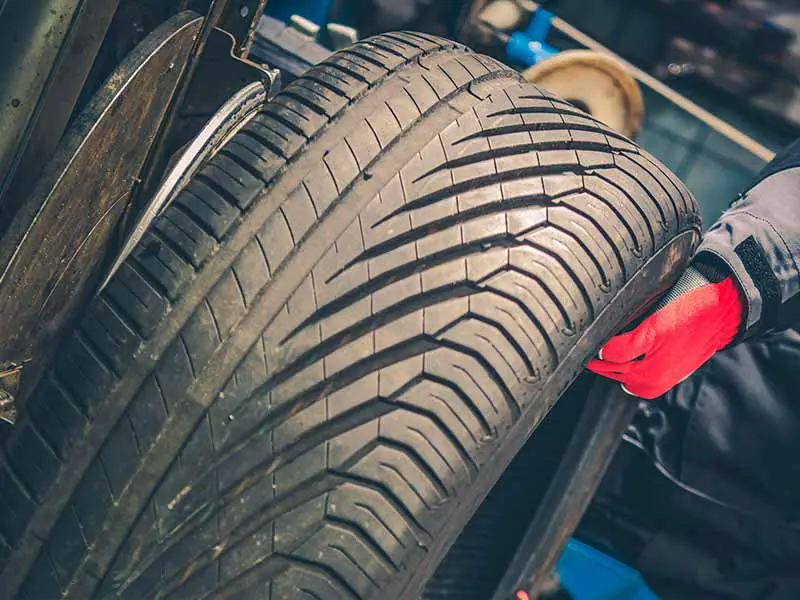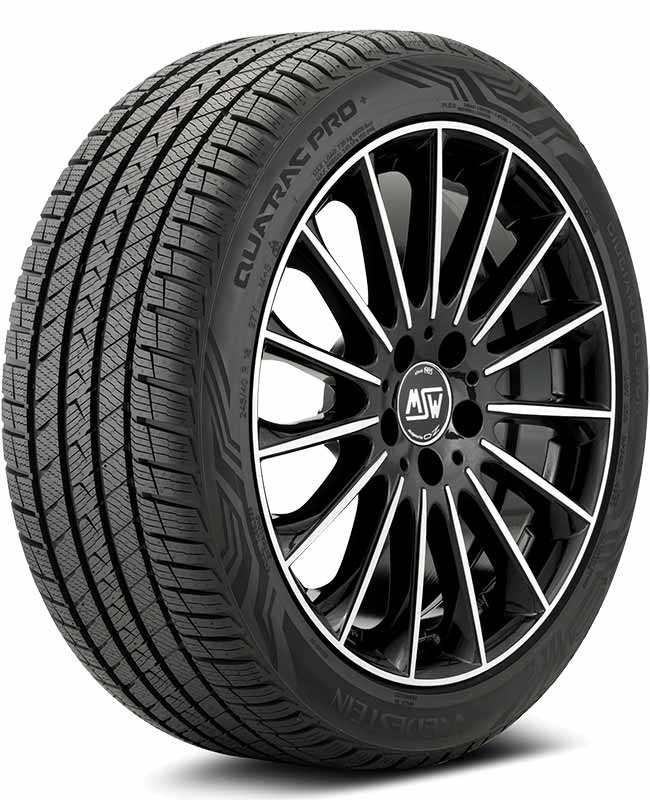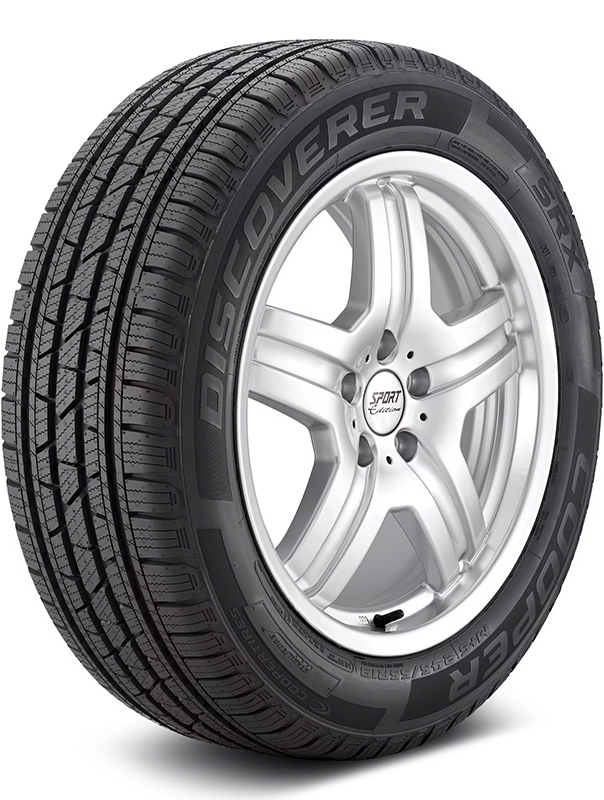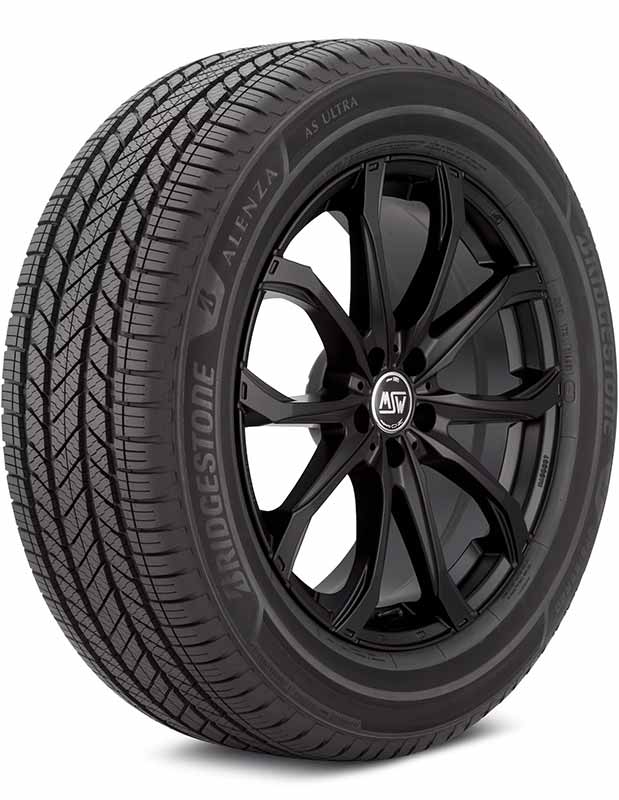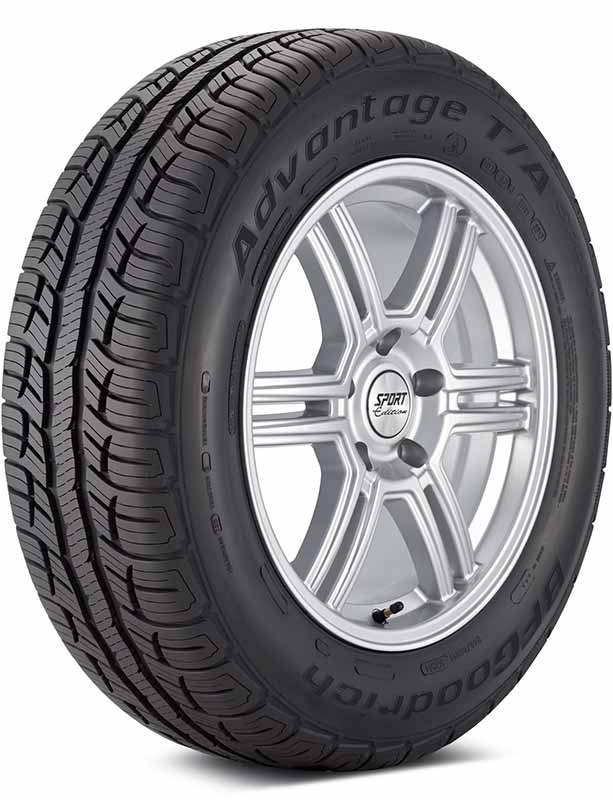Asymmetrical tread patterns have become increasingly popular in recent years due to their unique design and improved performance in a variety of driving conditions.
What Are Asymmetrical Tires?
Asymmetrical tires have different tread patterns on each side of the tire. One side of the tire has a specific tread pattern for wet conditions, while the other has a different one for dry conditions.
The idea behind this design is to provide better handling and performance in both wet and dry conditions.
In this article, we’ll dive deeper into what asymmetrical tires are, how they work, and the pros and cons of choosing this type of tire for your vehicle.
Let’s take a closer look.
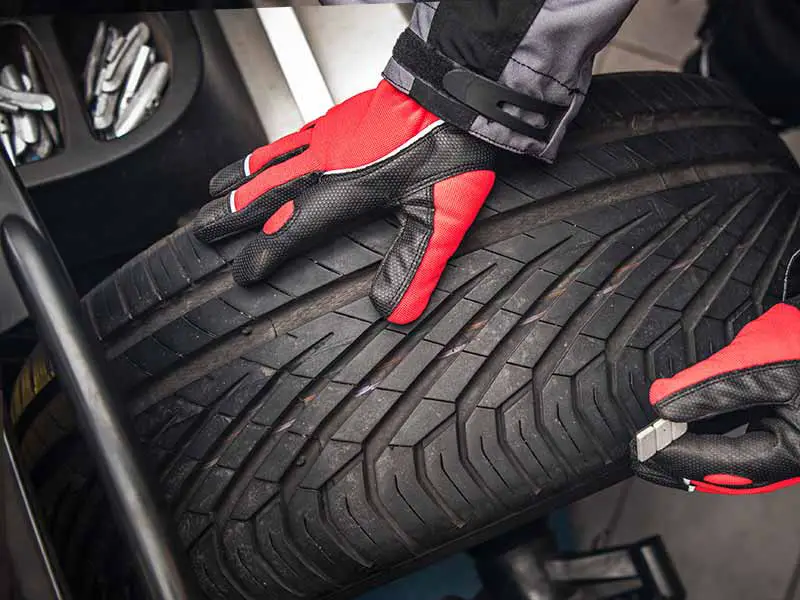
Asymmetrical Tires Pros And Cons
Pros
- Provide Superior Performance In Wet And Dry Conditions: The different tread patterns on each side of the tire allow for optimal handling and traction in a variety of situations. Plus, these tires often have a longer lifespan than their symmetrical counterparts because the design allows for more even wear.
- Offer Better Fuel Efficiency: Because they provide better handling, your car or truck won’t have to work as hard to maintain traction on the road. This means you’ll get more miles per gallon and save money on gas.
Cons
- Higher Purchase Price: More expensive Than Symmetrical tires because of their complex design. And because the different tread patterns on each side of the tire are meant to work together, you can’t switch the tires from one side of the vehicle to the other. This means you have to buy four new tires instead of just two when it’s time for a replacement.
- Not Ideal For Extreme Weather: May not perform as well in extreme weather conditions, such as heavy snow or ice. In these situations, you may need to switch to winter tires for optimal safety and performance.
Asymmetric Tires Vs Symmetrical
Asymmetric tires and symmetrical tires each have their own unique design and benefits.
Symmetrical tires have the same tread pattern across the entire surface of the tire. This makes them easy to rotate and switch from one side of the vehicle to the other. They’re also generally more affordable than asymmetrical tires.
Asymmetrical tires have different tread patterns on each side of the tire. This design allows for optimal performance in both wet and dry conditions. However, because of the different tread patterns, they must be mounted onto your wheels with the correct side facing outward. Once mounted properly, they will perform as designed. Asymmetrical tires are also typically more expensive than symmetrical tires.
In terms of handling, asymmetrical tires tend to perform better than symmetrical tires in a variety of conditions. This is because the different tread patterns on each side of the tire are specifically designed to provide better traction on wet and dry roads.
When it comes to durability, asymmetrical tires often have a longer lifespan than symmetrical tires because of their design. The different tread patterns wear more evenly, which can help extend the life of the tire.
Overall, both asymmetric and symmetrical tires have their own strengths and weaknesses. If you’re looking for a tire that offers optimal performance in wet and dry conditions and don’t mind paying a bit more, asymmetrical tires are a great choice. But if you’re on a tighter budget and looking for a more versatile tire that can be rotated easily, symmetrical tires may be a better option.
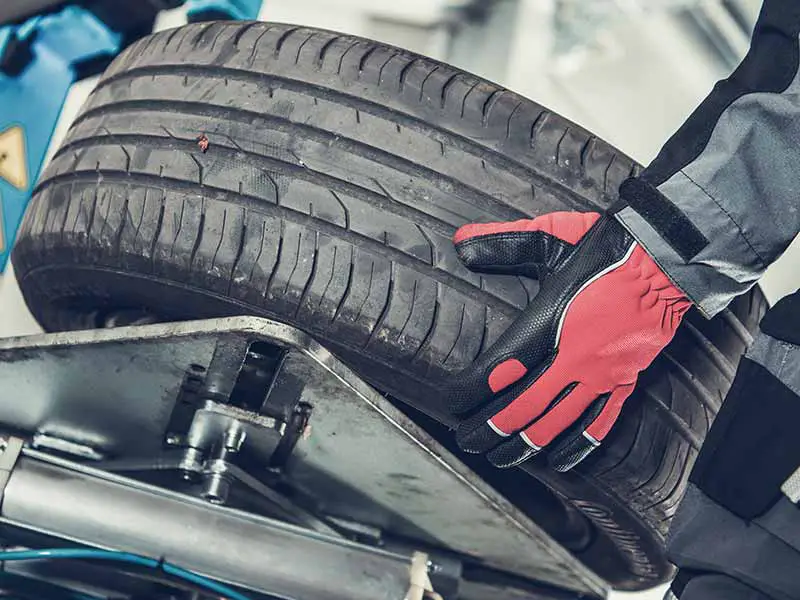
Asymmetric Tires Vs Directional
Directional tires have a V-shaped tread pattern designed to move water away from the tire as quickly as possible. This makes them ideal for use in wet conditions, such as during heavy rain or when driving on slick roads. The downside of directional tires is that they can only be rotated front-to-back, which can make them wear unevenly.
When it comes to handling, both asymmetric and directional tires can provide great performance in their respective conditions. Asymmetric tires can offer better handling on both wet and dry roads, while directional tires can provide better handling in wet conditions.
In terms of price, asymmetric tires are typically more expensive than directional tires due to their more complex design. However, they can also offer longer lifespans because of their ability to wear more evenly.
Overall, the choice between asymmetric and directional tires comes down to the driver’s specific needs. Directional tires may be the better choice if you frequently drive in wet conditions. But if you’re looking for a tire that can handle a variety of conditions and provide superior traction and handling, asymmetric tires are definitely worth considering.
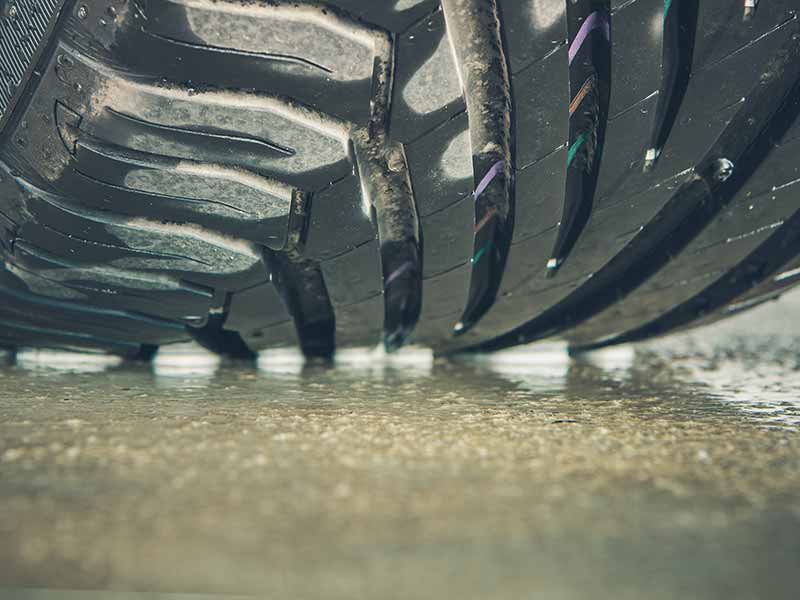
Asymmetrical Tires Rotation
Asymmetrical tire rotation often gets confused with the limitations of directional tire rotation. However, they can be rotated, just like symmetrical tires. However, it’s important to ensure that the tires are mounted on the wheel with the correct side facing outward, as the asymmetric tread pattern is optimized for specific sides of the vehicle. Once the tires are mounted correctly, they can be rotated using the same patterns as symmetrical tires.
The rotation pattern recommended by the manufacturer for your specific vehicle will depend on the type of tire and the car or truck itself. As a general rule, it’s a good idea to rotate your tires every 5,000 to ensure that they wear evenly and last as long as possible.
Directional tires have a specific tread pattern designed to move water away from the tire in one direction. As a result, they can only be rotated front to back, which can limit their lifespan. It’s important to follow the manufacturer’s recommendations for tire rotation intervals to ensure your tires wear evenly and last as long as possible.
Asymmetrical Tire Mounted Backwards (Inside Out)
If you mount asymmetrical tires with the wrong side facing outward, you could have poor handling and road performance. If the tires are mounted with the wrong side facing outward, the tread pattern won’t be optimized for the side of the vehicle it’s on, and you could experience reduced grip, poor handling, and even reduced fuel efficiency.
It’s important to ensure that asymmetrical tires are mounted correctly, with the correct side facing outward. This is usually indicated on the tire’s sidewall, with markings indicating “inside” and “outside.” If you’re not sure which side is which, consult with a professional tire technician to ensure that your tires are mounted correctly.
If you do happen to mount asymmetrical tires with the wrong side facing outward, it’s important to have them remounted as soon as possible. Continuing to drive with incorrectly mounted tires can cause uneven wear and reduce the lifespan of your tires.
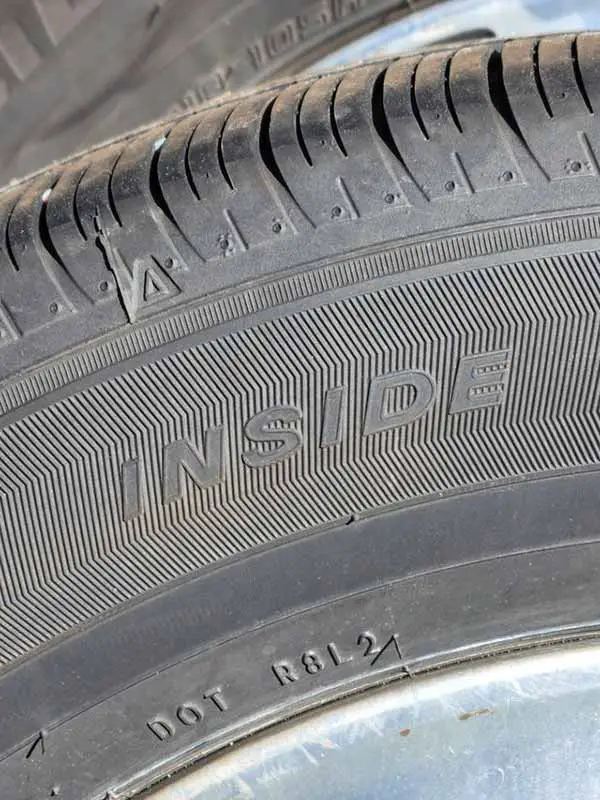
Are Asymmetrical Tires Better?
Asymmetrical tires can be better than symmetrical tires in certain situations. They can handle and perform better in wet and dry conditions with asymmetrical tires.
However, which tires are better really depends on your specific driving needs and the conditions you’re driving in. If you’re driving mostly in dry conditions, symmetrical tires may be just fine for you. But if you’re driving in a mix of wet and dry conditions or areas with a lot of rain or snow, asymmetrical tires may be the better choice.
As with any tire, choosing a tire that’s appropriate for your vehicle and driving conditions is important. You should consult with a professional tire technician to ensure that you’re selecting the best tire for your needs.
Resources
Below are some links you may find helpful when learning about tires
- Proper mounting of directional and asymmetrical tires – Goodyear
- Symmetric vs. asymmetric tires – TireBuyer
Final Thoughts
While asymmetrical tires may not be the best choice for every driver and situation, they can be an excellent option for those living in areas with a lot of rain or snow or frequently encountering different road conditions. Just make sure to choose a tire that’s appropriate for your vehicle and driving needs and to keep them properly inflated, rotated, and maintained for optimal performance and safety.
Ultimately, whether you choose asymmetrical tires or another type of tire, the most important thing is to prioritize your safety and the safety of others on the road. With the right tires and proper maintenance, you can enjoy a smooth and safe driving experience for miles to come.
Good luck and happy motoring.
